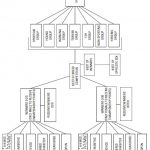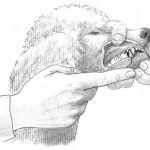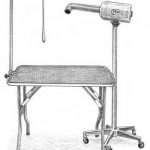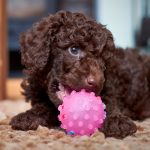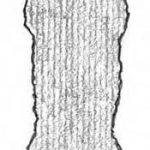Housetraining Made Easy

In This Chapter
- Understanding the basics of housetraining
- Surveying the different housetraining methods available to you
- Tidying up after your Poodle
You can’t live outdoors for as long as your Poodle is in the picture, so you need to housetrain him. In other words, you need to teach him where to “go.” The task may sound daunting, but if you’re patient and consistent, it won’t be that hard. In this chapter, I explain the basics of housetraining, describe several methods you can use, and give you tips for the task of cleaning up.
Remember
This chapter focuses on housetraining Poodle puppies. If you adopt an adult Poodle, hope that you’re lucky enough to find one that’s already housetrained and that needs to see the potty spot in his new home only once to know where to go. However, if you adopt an untrained adult Poodle, treat him like a puppy and follow the guidelines in this chapter.
Littering Your Brain with Housetraining Basics
Setting up a housetraining schedule for your Poodle
Looking at a typical schedule
Remember
You make up your own housetraining schedule to fit your family’s lifestyle, but some elements of the schedule won’t change. Your puppy needs to go to the bathroom when he first wakes up — from a good night’s sleep or from a short nap. He also needs to go 10 to 20 minutes after eating, as well as after any play session.
– 6:00 a.m. Take the puppy outside or to his indoor “potty spot” if you choose to keep him inside (see Chapter Choosing the Best Poodle for You for more about selecting a spot).
Warning!
Lift your puppy and carry him to the yard; don’t put him on the floor and coax him to follow you to the door. He may not be able to make it that far without going, and the more accidents he has in the house, the longer the housetraining will take.
– 6:15 a.m. Feed your puppy.
– 6:30 a.m. Take your puppy to his spot.
– 6:40–7:00 a.m. Play with your puppy.
– 7:00 a.m. Take your puppy to his spot. This time, when he’s finished, pop him into his crate so he’s safe and out of the way while you get ready for work or school.
– 8:00 a.m. Take your puppy to his spot once more before you leave the house, then crate him or put him in his enclosed space.
– Noon. Take your puppy to his spot that you’ve designated.
– 12:10 p.m. Feed your puppy, and prepare your own lunch. Crate your puppy while you eat.
– 12:45 p.m. Take your puppy outside or to his indoor spot again. If you have time, play with him for a bit, take him to his spot again, and then put him back in his crate or space.
– 3:00 p.m. The kids get home from school! Now they get the chance to take the puppy to his spot, play with him, and take him to his spot again.
– 5:30 p.m. Take your puppy outside or to his indoor area when you get home and then feed him.
– 5:45 p.m. Take your puppy to his spot again. Put him in his crate or training space while you fix dinner and your family eats. After dinner, take your puppy to his spot again.
– 7:00 p.m. Take your puppy to his spot and then get ready for some playtime!
– 7:15 p.m. Take your puppy to his spot after you play.
For the rest of the evening, depending on your puppy, he may snooze, or he may want to play. Watch him for signs that he needs to go outside (I cover telltale signs later in this chapter).
– 11:00 p.m. Take your puppy outside one more time before bed.
Adapting training to your schedule
– Post the housetraining schedule on your refrigerator door so that all family members can see when your puppy needs to go out or be put in the litter box (I cover this method later in this chapter).
– If no one in your house can get home at noon, find out whether a neighbor is willing to take your puppy out. On the other hand, if someone in your family stays home all day, your puppy will get more playtime and more trips out to the yard. You could also hire a pet sitter or professional dog walker, which would probably cost between $9 and $20 a visit.
Remember
If everyone in your family leaves home early and gets back late, your schedule doesn’t prevent you from having a puppy, but it does mean that you can’t crate train, all the time. Use an ex-pen (see Chapter Choosing the Best Poodle for You) during the day and the crate on evenings and weekends. The whole process will probably take longer. But Poodles are both smart and adaptable, and with time, you’ll have a housetrained dog.
Staying consistent (yet flexible) in your training routine
Remember
Be consistent in your housetraining routine . . . and stay flexible at the same time. If this paragraph were an e-mail, I’d put a smiley face here. My advice may seem contradictory, but I assure you that it isn’t. So, what do I mean by consistent and flexible?
– Consistency: As much as possible, you should follow your housetraining schedule (see the previous section). Dogs are creatures of habit, and your puppy will soon learn when you let him out. If you don’t stick to a schedule, your puppy will get confused, and housetraining will take longer.
– Flexibility: However, your puppy isn’t a machine. He may have his own ideas, or his needs may not match the schedule you’ve chosen. He may always need a 2 a.m. outing during the first couple weeks at his new home. Or you may discover that your puppy doesn’t have to go outside for 45 minutes after eating.
No matter what kind of pattern your puppy seems to have, remember that it can change over time. Try to be consistent, but stay alert to any changes you may need to make.
Speeding up the training process
– Always use the same door to go outside. Make sure all your other family members or roommates use that door, too. When your puppy is old enough to signal to you that he needs to go out, he’ll always use that door (see the following section for a list of telltale signals).
– Use the same spot in the yard. Your puppy will smell urine and know that he’s come to the right place. Use his sense of smell to your advantage.
Warning!
The exact spot is your choice, but remember that vegetation in any spot that gets frequent visits from a dog will suffer a bit, both from doggy paws and from urine.
– Praise! When your puppy goes where you want him to go, praise him. Your neighbors may think you’re strange if you’re outside clapping and spouting baby talk, but pay no mind; make a big fuss when he goes in the right spot, and give him a treat. You may even reward him with a play session.
However, always save the play session for after he goes. Puppies are easily distracted, and if you play first, he may forget that he has to go until he gets back to your new carpet.
– Always go out with your puppy. Don’t just open your chosen door and shove your puppy out. Giving your dog some privacy may be fine if he’s an adult, but with a puppy, you need to take him to the right area and praise him.
– Take out your puppy on a lead. Not only does a lead help you guide your puppy but also keeps him from scooting away. Puppies are faster than you! You don’t want to be on your hands and knees, crawling under a lilac bush to retrieve your puppy at three in the morning or when you’re dressed for work. (See Chapter Choosing the Best Poodle for You for more on the right tools to have for your Poodle.)
– Make mealtime a part of the schedule. When your Poodle becomes an adult, you may decide that you want to free feed him, and that’s fine (see Chapter Making a Match with a Poodle for details on free feeding). But for now, regular meals make it easier to schedule bathroom breaks and reduce the chance that your puppy will go while you’re away.
Recognizing the telltale “I gotta go!” signs
– The “potty dance”: You may see your dog do a short little “dance,” shifting his front paws back and forth.
– The sniff and circle: Many dogs sniff around and circle a spot before they go. Puppies often grow out of this phase, but it may become quite a ritual for some adults.
– Pacing: Generally, with dogs that pace back and forth, the pacing area gets shorter and shorter until they finally go.
– Whining: Whining is a sound cue that may mean, “I gotta go!” Adult dogs frequently stand by doors and whine to signal you for a bathroom break.
– Standing by the door: Some dogs never whine; they just wait patiently by their doors until their humans come along to open them. If you haven’t seen your Poodle in a while, check in front of your door.
– Staring: Staring isn’t as common as some of the other indicators, but some dogs use it as a signal. Generally, when your Poodle sits in front of you and stares, he wants to remind you that it’s dinnertime, but some dogs stare when they need to go out.
Mastering Effective Housetraining Methods
Tip
Poodles are smart enough to be both indoor and outdoor dogs when it comes to bathroom habits. Although it may be easier and preferable to teach your Poodle to go either outdoors or indoors, apartment dwellers who train their Poodles to go outdoors, for example, may have times when they want their dogs to go indoors. A dog trained with litter or paper that experiences a move outside will quickly learn that when his owner provides paper or litter, he has permission to go indoors.
Sleeping the day away: Crate training
Warning!
Crate training isn’t possible if you or others in your life can’t come home for long stretches of time. You can’t expect your puppy to hold it for more than four hours at a time. No puppy wants to go in his bed, but he will if he must. And when your puppy does start to go in his crate, he starts a hard habit to break.
– Your puppy doesn’t want to go in his bed, so he learns to hold it — especially if you follow a schedule and he knows he’ll be able to go soon (see the section “Setting up a housetraining schedule for your Poodle”).
– If your puppy does have an accident in his crate, you have only a small, easy-to-clean area to worry about — not a big spot in the middle of the living room rug.
Putting pee to paper: Paper training
1. Set up an exercise pen, in a large area of your home.
A bathroom, laundry room, or corner of the kitchen can work; these areas typically have linoleum flooring, which makes cleanup easier. If the room has a door, that will keep the puppy in, or you can put up a baby gate across the doorway. In a large area, with no doors, consider using an exercise pen to contain your Poodle.
Warning!
2. Remove any chewable items from the area.
Chair and table legs make great toys for puppies. Make sure no electric cords are visible in the housetraining area.
3. Put your puppy’s crate in the area; leave the door open for naps, and supply water and a few toys.
4. Cover the entire floor with several layers of newspaper inside the pen.
Depending on the flooring, you may want to put down a large piece of plastic to protect it. A shower curtain makes for an inexpensive barrier. Figure 9-1 shows a setup for paper training.
5. Whenever you notice a puddle or a pile, you should clean the area; to clean, remove the top layers of newspaper, but leave a lower layer or two.
When you cover the area with more newspaper after cleaning, you’ll leave enough odor to tell your puppy that this is the spot to go.
6. After several days, remove some of the newspapers, leaving a smaller area of the floor covered.
If your puppy consistently uses the paper rather than the uncovered floor, you can reduce the papered area even further. Continue this process until you’ve removed all the paper. Be sure to take your time; you want your puppy to fully understand that the paper is the proper bathroom spot.
During this process, you can begin the transition to going outside. You can use a piece of the soiled newspaper you clean up to mark an appropriate spot in the yard. Weigh the paper down with a rock, and when you’re in the yard, walk your puppy to the paper and let him sniff.
Scratch and sprinkle: Litter training
– If you have a small balcony off your house or apartment, a corner of it could serve as a doggy outhouse.
– You can use a litter box without a cover at any convenient spot in your home (see Figure 9-2).
Tip
You may decide to use a cat litter box, which is fine, but some litter boxes are made especially for dog litter. If you decide to use litter, make sure you use dog litter, not cat litter. Dog litter doesn’t fly around as much if your Poodle wants to scratch and scuff after going. Other boxes may use sod or artificial turf, or may even come with a post for male dogs. Sod or turf look more like grass, but can be more expensive to replace. Artificial turf needs to be cleaned frequently to prevent a build-up of odor and germs. Litter is easier to replace and store.
Surveying additional indoor training options
Remember
All indoor training methods are best suited for Toy or Miniature Poodles. However, if you have plenty of space, your Standard can learn these methods just as quickly as the smaller Poodle varieties (see Chapter Socializing Your Poodle for more on variety distinctions).
Permanent paper training
Tip
Before beginning this type of training, make sure you plan ahead and start the training in an area that’s fit to be your Poodle’s permanent bathroom. You can create a small wooden or plastic frame to help define the area and contain the papers if you like.
Pads
– You can wash these pads approximately 300 times each.
– You need four or five pads at least because they need to air dry before reuse.
– Washable pads are generally larger than disposable pads; they come in sizes of 2 feet x 2 feet, 3 x 3, and 4 x 4.
Getting the Scoop on Cleanup Duty
Cleaning up inside
1. Your first goal is to pick up the feces or vomit.
You can use a plastic bag or paper towels to pick up the feces. For vomit, you can use a dustpan or a couple of paper plates to scrape it up. If you use plates, fold the first plate in half and crease the fold. Do the same with the second plate, and then use them both to scoop and trap the vomit.
2. When you have all the extra liquids and solids off the floor, you can tackle cleaning with your product of choice.
Your favorite carpet cleaner or floor cleaner will suffice. However, the old standbys are club soda and white vinegar. The soda is supposed to prevent staining, and the vinegar should take care of the odor. I’ve had mixed results with this combination, but in a pinch, these two products will help.
1. Blot as much of the puddle as you can, pour on some vinegar, and then blot it all up.
Warning!
No matter where the accident occurs, never use ammoniabased products to clean it. Urine contains ammonia, and a faint whiff of the chemical will tell your puppy to return to that spot the next time he needs to go.
2. Create a large pad of paper towels, place the pad over the wet spot, and step on it.
3. Rock back and forth. Repeat. Repeat.
Keep going until you don’t pick up any more moisture. You’ll use a lot of paper towels, so you may want to buy stock in a paper company now!
4. Repeat the process with some club soda to minimize staining and let the area dry.
Tip
Urine-Off is an amazing product that handles both stain and odor. It works! I’ve never used it on any accidents other than urine, but you may want to give it a try. Your local pet-supply stores may have Urine-Off. Where I live, it’s available at a carpet store. Oxygen cleaners also can effectively remove stains and odor. You may be able to find products available through pet-supply catalogs and at pet-supply stores that will work to some extent. You can easily find oxygen cleaners in your grocery store with other cleaning supplies.
Cleaning up in the great outdoors
– Your yard: You may like to take your Poodle on hikes or for jogs around the block, but first thing in the morning and last thing at night, your Poodle will use your yard for exercise and bathroom breaks. To clean up, use a pooper-scooper on a regular basis, and dispose of the waste in a lined trashcan or in a doggy septic system (see Chapter Choosing the Best Poodle for You for more on these items).
– Public areas: You can’t easily carry a pooper-scooper on a walk, which is where plastic bags come in. For Toys and Miniatures (see Chapter Socializing Your Poodle), small, plastic sandwich bags work well. And for any size Poodle, this is your chance to recycle. You can recycle the plastic sleeves that cover your newspapers, use plastic bread bags, or use the plastic bags your groceries come in. Just make sure the bags don’t have holes in them!
1. Put the bag over your hand.
2. Pick up the droppings.
3. Pull the bag edge forward, over the mess in your hand.
Tip
I also carry a small brown bag in which to drop the plastic bag for the trip home. It’s a bit more aesthetically pleasing to others.
Remember
A benefit of picking up after your Poodle is that you soon know what your dog’s normal stool looks like. If you see a change — you notice mucus, blood, or a drastic change in color — you may want to plan a trip to the vet’s.
by Susan M.Ewing










